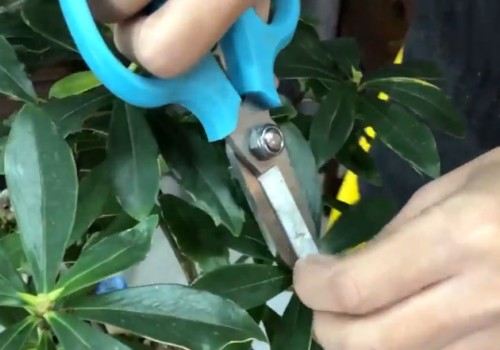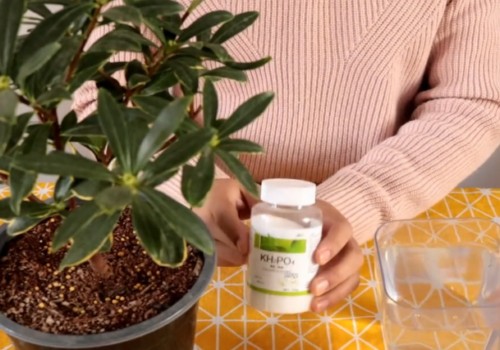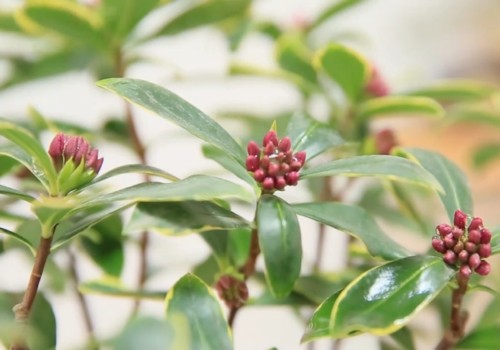How to maintain Ruixiang after blooming
Ruixiang flowering is both good-looking and fragrant, and it is also more shady, like semi-shade and the growth environment with sufficient scattered light, so it is very suitable to be cultivated indoors as a family pot. However, its aroma is very rich, in order not to make people feel uncomfortable, the environmental ventilation must be smooth, so that the indoor fragrance of flowers can be more comfortable.

However, after enjoying the flowers, we also need to strengthen the conservation and management of potted Daphne in time. Because Daphne will consume a lot of nutrients and energy during the flowering period, the plant will become more fragile after blooming, so we need to strengthen management in time to restore its normal growth. Otherwise, the potted plant will not only look bad, but also consume unnecessary nutrients in vain, making the plant grow weaker and difficult to recover. So, how to maintain Ruixiang after blooming?
1. Pruning in time
After blooming, Daphne must remember to prune it in time, especially to cut off the residual flowers, which can prevent plant growth, save some nutrients and stimulate plant growth. However, the pruning of other parts also needs to be decided according to the needs of the plant type, so as to keep the plant type of Ruixiang plump and round as far as possible.
Of course, in the specific pruning process, we also need to consider according to the growth of the plant, to properly top the branches that grow tall and long and are easy to destroy the plant type in order to control its continued growth. But when cutting down, generally count 2-3 leaves from top to bottom, and then cut off the tip. After topping, new buds will sprout in the axils of the top leaves of the branches. And we also need to cut off the receptacle, after some pruning, the plant is bound to become more beautiful and promote its growth.
II. Daily maintenance
Daphne will gradually enter the growth period after blooming, so the demand for water and fertilizer will also increase. Original and also need to increase light to promote photosynthesis in order to accelerate germination and growth. Therefore, the maintenance and management work in all aspects should be strengthened after flowering.
1. Watering
If we do not water it in time after flowering, the leaves of the plant may droop and droop. However, once we resume watering, it will come back to life. However, when watering Ruixiang, we should pay attention to keep the basin soil slightly moist by pouring water thoroughly, neither too dry nor too wet. After all, its fleshy roots are easily damaged by improper watering. Therefore, before watering, be sure to observe the growth status of the potted soil and plants to see if the leaves droop or wilt.
2. Fertilization
When Daphne is most in need of nutrients after flowering, we can generally apply some slow-release compound fertilizer, which is suitable for granulation and evenly sprinkled in the basin, which is very convenient, the nutrition of nitrogen, phosphorus and potassium is balanced, and the fertilizer effect is long-lasting. Of course, you can also apply fertilizer and water, but at this time, topdressing is usually based on root irrigation, and topdressing every 2 weeks is better.
3. Lighting
As Ruixiang ends its flowering in spring, and the light intensity in spring is still relatively weak, we should let it bask in the sun more to make sure it has enough light. In this way, the plant can better carry out photosynthesis and form nutrition, and the faster the plant recovers and grows, the better its growth will be. Therefore, providing sufficient light after anthesis is also very important to restore and promote plant growth.
4. Temperature
The weather is generally warmer in spring, but it is inevitable that there will be occasional "late spring cold", so we should still pay attention to avoid freezing the plants because of the temporary low temperature. Generally speaking, it is most appropriate to keep the ambient temperature above 10 °C for the growth of Daphne odora, and there is no need to worry about the high temperature in spring.
Time: 2019-05-27 Click:
- Prev

How to maintain the flower bracts of Daphne odorifera
Ruixiang blossoms beautifully and exudes a strong fragrance at the same time. However, if you want it to open the bud smoothly as scheduled, the maintenance and management during the period of bud growth must be done well. Because the flower bud stage is the key period for Ruixiang to open the bud smoothly, if it is not properly maintained, it will not only be unable to open the bud.
- Next

What if Phnom Penh Daphne has buds but does not blossom?
Phnom Penh Daphne is a very fragrant flowering plant, at the same time, because the edge of its leaves is golden, as if inlaid with a piece of Phnom Penh, it is not only suitable for viewing flowers, but also suitable for viewing leaves, but also very fragrant. And Phnom Penh Ruixiang is afraid of strong light, and likes a warm, semi-shady environment with plenty of scattered light and smooth ventilation.
Related
- Fuxing push coffee new agricultural production and marketing class: lack of small-scale processing plants
- Jujube rice field leisure farm deep ploughing Yilan for five years to create a space for organic food and play
- Nongyu Farm-A trial of organic papaya for brave women with advanced technology
- Four points for attention in the prevention and control of diseases and insect pests of edible fungi
- How to add nutrient solution to Edible Fungi
- Is there any good way to control edible fungus mites?
- Open Inoculation Technology of Edible Fungi
- Is there any clever way to use fertilizer for edible fungus in winter?
- What agents are used to kill the pathogens of edible fungi in the mushroom shed?
- Rapid drying of Edible Fungi

